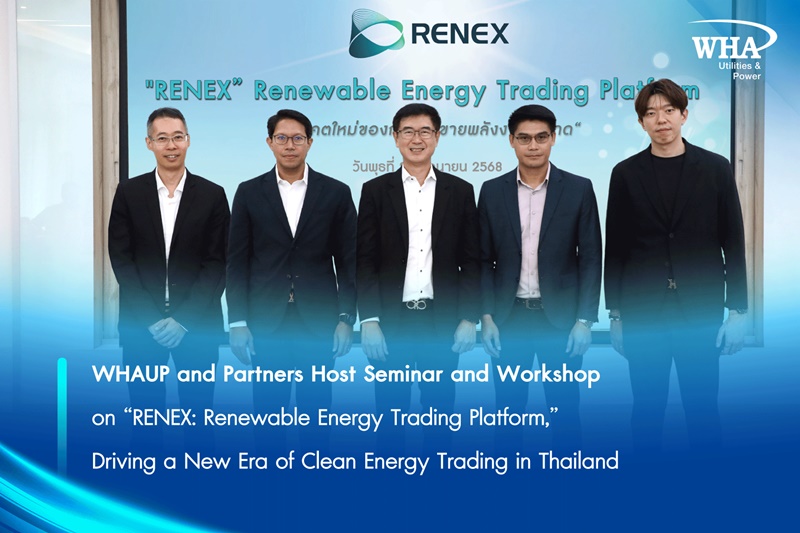China’s Renewable Revolution: Paving the Way for Advanced Decarbonization – Thailand Business News

Report on China’s Climate Transition and its Alignment with Sustainable Development Goals
Introduction: A Critical Juncture for Climate Action and Sustainable Development
China’s climate transition is at a pivotal stage, presenting both significant progress and substantial challenges in its pursuit of the Sustainable Development Goals (SDGs). The nation’s efforts to achieve carbon neutrality are intrinsically linked to SDG 13 (Climate Action), while its strategy for renewable energy deployment directly addresses SDG 7 (Affordable and Clean Energy). However, realizing these goals is contingent on overcoming critical infrastructure and policy hurdles, which are central to SDG 9 (Industry, Innovation, and Infrastructure) and SDG 11 (Sustainable Cities and Communities).
Analysis of Progress and Challenges in Achieving Climate Targets
Energy Consumption and Emissions Trends (2020-2024)
An assessment of the 2020-2024 period reveals trends that challenge China’s progress towards its climate commitments and related SDGs.
- Rising Consumption: Both energy consumption and carbon emissions have increased at a rate faster than economic growth, indicating a growing gap in decoupling economic activity from environmental impact, a key tenet of sustainable development.
- Intensity Goals at Risk: This trajectory places pressure on China’s interim goals for reducing energy and carbon intensity under the 14th Five-Year Plan, directly impacting the nation’s ability to meet its obligations under SDG 13 (Climate Action).
- Sectoral Drivers: The power and transport sectors have been the primary drivers of emissions growth, highlighting the need for targeted interventions in urban mobility and energy systems to advance SDG 11 (Sustainable Cities and Communities).
Renewable Energy Expansion and Infrastructure Deficiencies
Progress Towards SDG 7 (Affordable and Clean Energy)
China has demonstrated global leadership in the expansion of renewable energy capacity, a significant step towards achieving Target 7.2 of the SDGs.
- In 2023 and 2024 alone, China added an estimated 649 gigawatts of new solar and wind capacity.
- Despite this rapid growth, fossil fuels continue to meet a substantial portion of the surging electricity demand, indicating that the transition to clean energy as envisioned by SDG 7 is incomplete.
Infrastructure Gaps Impeding Decarbonization (SDG 9)
The full potential of China’s renewable assets is constrained by significant infrastructure and systemic gaps, which must be addressed to align with SDG 9 (Industry, Innovation, and Infrastructure).
- Geographical Imbalance: A majority of new renewable installations are located in regions far from the high-demand coastal urban centers, creating a logistical challenge for energy transmission.
- Inadequate Grid Infrastructure: The existing transmission infrastructure is insufficient to efficiently transport clean energy from generation sites to consumption hubs.
- Energy Curtailment: These deficiencies lead to rising curtailment rates, where renewable energy is generated but cannot be utilized, undermining the objectives of SDG 7 and representing a significant inefficiency in the energy system.
Strategic Recommendations for Future Decarbonization
Investment in Resilient Infrastructure and Technology
To fully unlock its clean energy potential and meet its SDG commitments, China must prioritize strategic investments in modernizing its energy infrastructure, in line with SDG 9.
- Ultra High-Voltage (UHV) Transmission: Expanding UHV networks is essential to bridge the geographical gap between renewable energy sources and demand centers.
- Smart Grids: Implementing smart grid technology will enhance grid flexibility and facilitate the seamless integration of variable renewable sources.
- Energy Storage: Scaling up energy storage solutions is critical for ensuring grid stability and reliability as the share of renewables increases.
Policy and Market Reforms
Structural reforms are necessary to create an enabling environment for a low-carbon energy system.
- National Electricity Market: The creation of a unified national electricity market would optimize energy dispatch and promote efficiency.
- Prioritizing Low-Carbon Generation: Market rules must be reformed to prioritize the dispatch of low-carbon and renewable energy over fossil fuels.
Future Outlook
An encouraging trend emerged by early 2025, with the growth in renewable electricity generation beginning to outpace the growth in overall electricity demand. If this momentum is sustained through targeted infrastructure investment and policy reform, China could achieve a peak in power sector emissions. Such an achievement would be a critical milestone for SDG 13 (Climate Action) and position China as a global leader in the transition to affordable and clean energy, as championed by SDG 7.
Analysis of Sustainable Development Goals in the Article
1. Which SDGs are addressed or connected to the issues highlighted in the article?
- SDG 7: Affordable and Clean Energy – The article’s central theme is China’s massive expansion of renewable energy, specifically solar and wind power, and the challenges in making this energy accessible and fully utilized.
- SDG 9: Industry, Innovation and Infrastructure – The text explicitly discusses the need for significant upgrades and investments in infrastructure, such as ultra high-voltage transmission lines, smart grids, and energy storage, to support the renewable energy surge.
- SDG 13: Climate Action – The entire article is framed around China’s climate transition, its goals for carbon neutrality, the challenges in reducing emissions, and the integration of climate goals into national policies like the 14th Five-Year Plan.
2. What specific targets under those SDGs can be identified based on the article’s content?
- Target 7.2: By 2030, increase substantially the share of renewable energy in the global energy mix.
- The article directly addresses this by mentioning China’s addition of “649 gigawatts of new solar and wind capacity in 2023 and 2024” and the fact that “renewable electricity growth outpaced overall demand” by early 2025.
- Target 9.1: Develop quality, reliable, sustainable and resilient infrastructure… to support economic development and human well-being.
- This is identified through the article’s emphasis on the “inadequate transmission infrastructure” and the need to enhance the grid through “investment in ultra high-voltage transmission, smart grids, and energy storage” to connect renewable sources with high-demand regions.
- Target 13.2: Integrate climate change measures into national policies, strategies and planning.
- The article explicitly refers to China’s “interim climate goals under the 14th Five-Year Plan” and the need for “policy reforms” in the power sector to achieve its “carbon neutrality goals.”
3. Are there any indicators mentioned or implied in the article that can be used to measure progress towards the identified targets?
- For Target 7.2:
- Indicator 7.2.1 (Renewable energy share in the total final energy consumption): The article provides specific data points that measure this, such as the “649 gigawatts of new solar and wind capacity” and the observation that “renewable electricity growth outpaced overall demand.” The “rising curtailment rates” are an implied negative indicator, showing that a share of renewable energy is not being consumed.
- For Target 9.1:
- The article implies indicators related to infrastructure quality and reach. The mention of “geographical imbalances and inadequate transmission infrastructure” and “rising curtailment rates” serve as qualitative indicators of infrastructure gaps. The call for “investment in ultra high-voltage transmission, smart grids, and energy storage” points to the types of infrastructure development that could be measured.
- For Target 13.2:
- Indicator 13.2.2 (Total greenhouse gas emissions per year): The article discusses the trend of “carbon emissions [rising] rapidly” and the goal to achieve a “peak in power sector emissions.” It also mentions the need for “reductions in energy and carbon intensity.” These are direct measures of greenhouse gas emissions.
- Indicator 13.2.1 (Number of countries that have communicated the establishment or operationalization of an integrated policy/strategy/plan): The mention of the “14th Five-Year Plan” is a direct example of an integrated national policy aimed at addressing climate change.
4. Summary Table of SDGs, Targets, and Indicators
| SDGs | Targets | Indicators Identified in the Article |
|---|---|---|
| SDG 7: Affordable and Clean Energy | 7.2: Increase substantially the share of renewable energy in the global energy mix. |
|
| SDG 9: Industry, Innovation and Infrastructure | 9.1: Develop quality, reliable, sustainable and resilient infrastructure. |
|
| SDG 13: Climate Action | 13.2: Integrate climate change measures into national policies, strategies and planning. |
|
Source: thailand-business-news.com

What is Your Reaction?
 Like
0
Like
0
 Dislike
0
Dislike
0
 Love
0
Love
0
 Funny
0
Funny
0
 Angry
0
Angry
0
 Sad
0
Sad
0
 Wow
0
Wow
0



























;Resize=805#)



















































